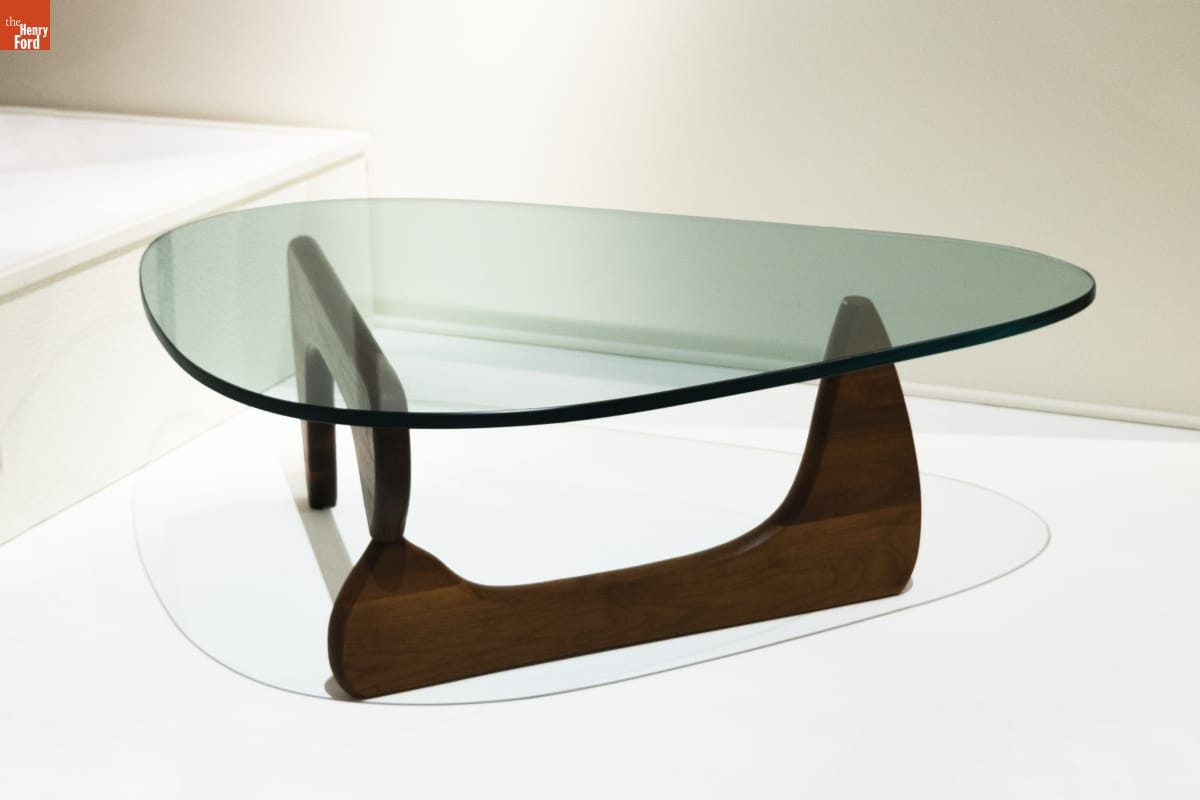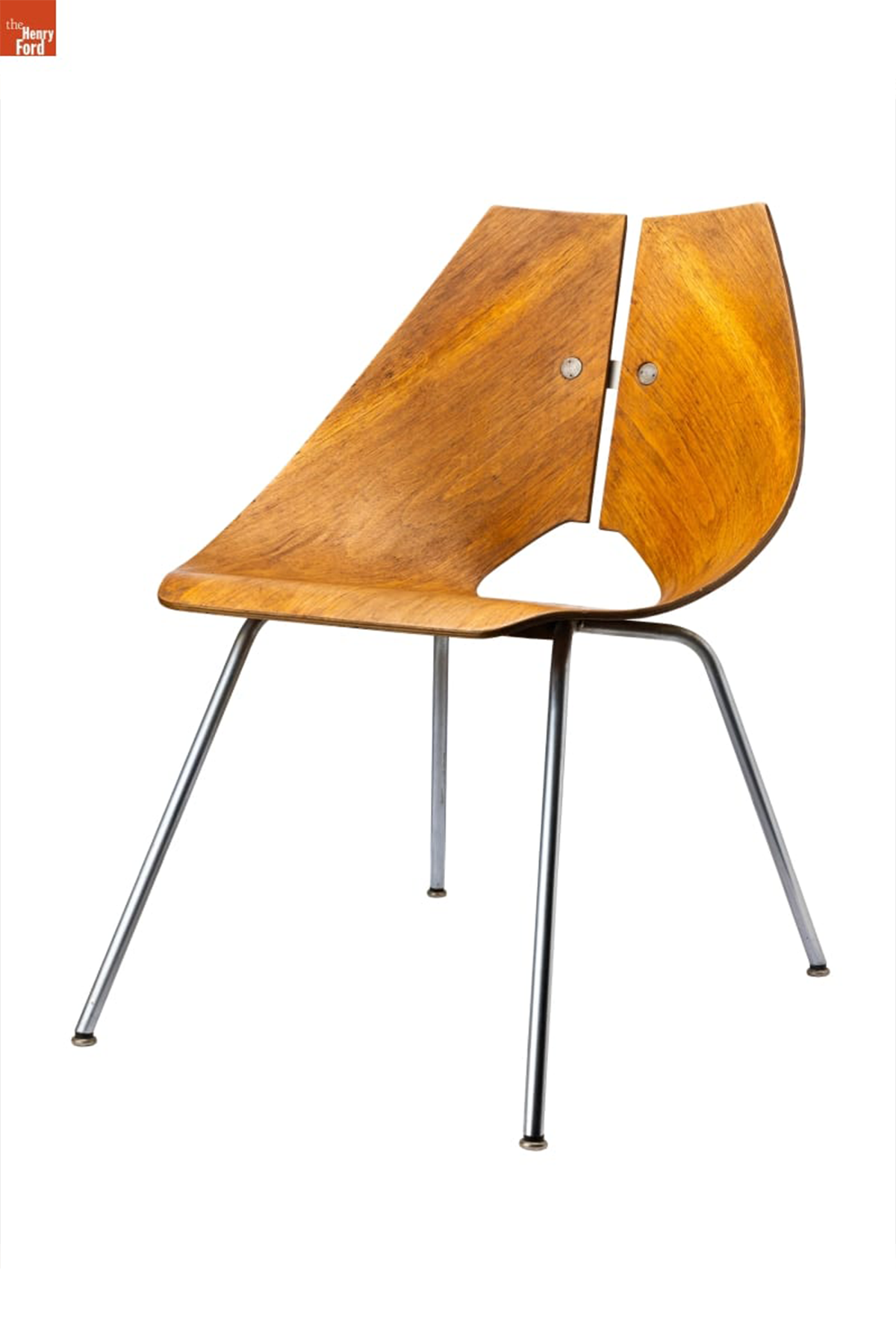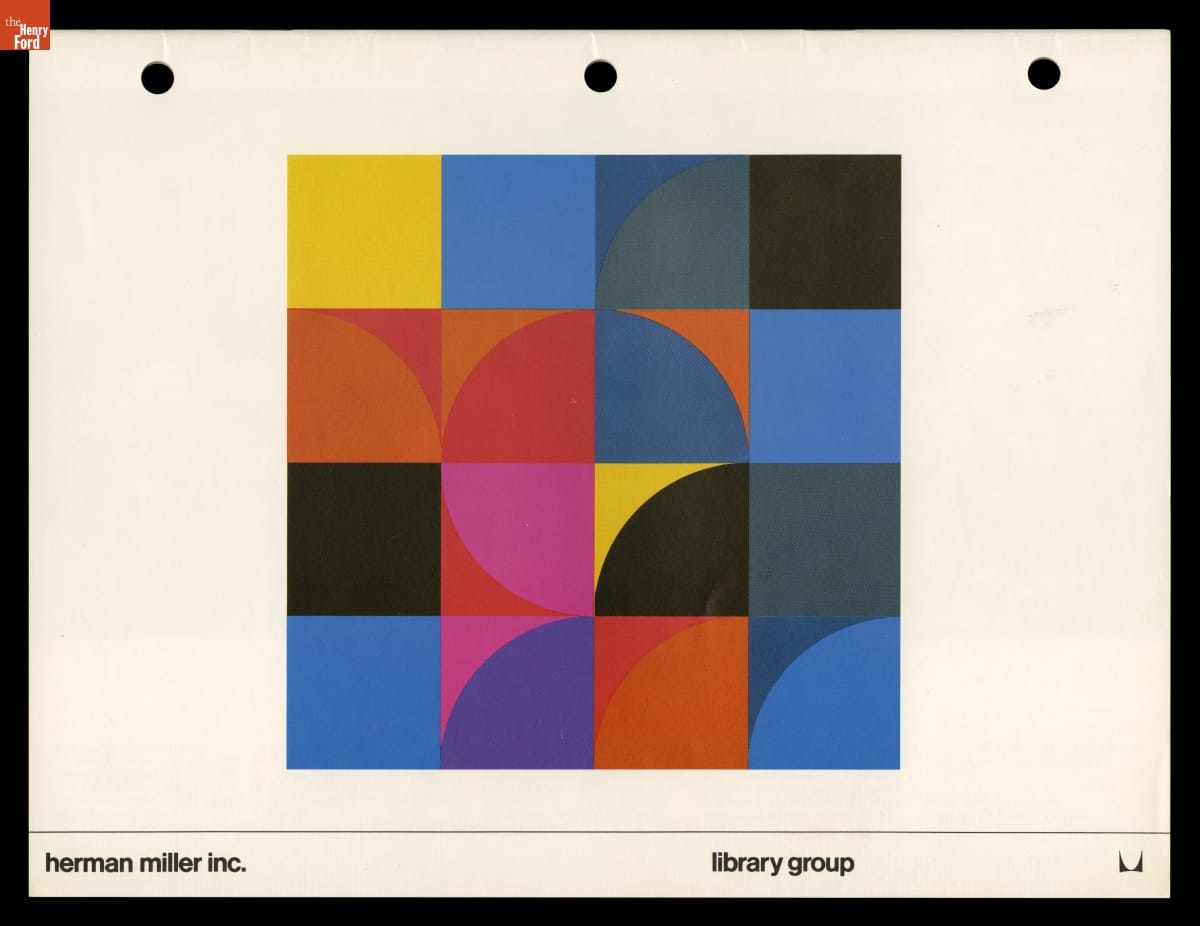Japanese American Designers: Isamu Noguchi, Ray Komai and Tomoko Miho
Japanese design was a major influence in the development of American modernism, often referenced as inspiration for architects like Frank Lloyd Wright, Walter Gropius and other early modernists. But it wasn’t just Japanese motifs that were influential. Many prominent Japanese American designers were active in the 20th century and were responsible for designing everything from the World Trade Center in New York City (Minoru Yamasaki) to the monitors kept in a child’s bedroom (Isamu Noguchi).
The following highlights a few of the Japanese American designers whose work is held in The Henry Ford’s collection.
Isamu Noguchi

IN-50 table for Herman Miller, designed by Isamu Noguchi / THF186033
Isamu Noguchi was born in 1904 to an American mother and Japanese father in Los Angeles, California. Noguchi spent his childhood in Japan and his adolescence in rural Indiana. He attended the Interlaken School in La Porte, Indiana. The school emphasized both craft and industry — a tension Noguchi would work within all his life, sometimes moving toward handicrafts and other times toward mass production and new technologies. After graduating from high school, he worked for the sculptor Gutzon Borglum (best known for his work on Mount Rushmore) for a short time and then enrolled at Columbia University in New York City as a premedical student. Simultaneously, he took classes at the Leonardo da Vinci School of Art under Onorio Ruotolo. He soon quit university and committed to life as an artist. He encountered the modern abstractionist sculpture of Constantin Brancusi in 1926 and traveled to Paris the following year to work in Brancusi’s studio. In the following years, Noguchi created sculptural busts on commission and worked in industrial and packaging design to make a living.
During World War II, Noguchi was exempt from incarceration in one of America’s 10 internment camps because he lived in New York City (and Executive Order 9066, which authorized the forced internment of people deemed a threat to national security — typically Japanese Americans — but only those who lived on the West Coast). However, Noguchi voluntarily entered the Poston War Relocation Center in Arizona in 1942 with a goal to help his community. He remained for two years and remarked, “Thus I willfully became part of humanity uprooted.”
Noguchi was prolific and utilized a variety of mediums throughout his career. He designed furniture and lighting, like the Noguchi Table for Herman Miller and the electrified sculptures known as his Akari lamps. He ventured more fully into mass production and industrialization with the striking design of the molded Bakelite Radio Nurse — the first baby monitor. And he experimented with sculpting environments, from stage sets to installations, as well as public parks and playgrounds. Noguchi died in 1988 at the age of 84. The Noguchi Museum in Queens, New York, preserves and amplifies his legacy.
Ray Komai

Side chair for J.G. Furniture, designed by Ray Komai / THF199350
Ray Komai was a Japanese American designer who worked in furniture, graphic, textile, interior and exhibition design. Komai was born in 1918 in Los Angeles, California, and raised there. He attended the ArtCenter School from 1936-1941, learning from architects and designers like Richard Neutra, Frank Lloyd Wright and Kem Weber, who were part of the faculty during Komai’s tenure. In 1942, he and his wife, Harumi Kawahara, were forcibly relocated to the Manzanar War Relocation Center, a central California internment camp. While interned at Manzanar, Komai worked in the Industrial Division, designing children’s toys. During the 1940s and 1950s, Komai worked with and for many of the industry’s leading businesses, including CBS where he focused on graphic design for trade periodicals and brochures.
Komai’s best-known works today are the textiles and wallpaper for Laverne Originals and L. Anton Maix and his chairs for J.G. Furnishings. These objects were celebrated at the time of their design too — two of his textiles were selected for the Museum of Modern Art’s (MoMA) Art in Your Life exhibition in 1949, and his chair designs were selected for MoMA’s Good Design exhibition in 1950. He went on to become an associate art director for the prestigious publication Architectural Forum and designed over 30 of the magazine’s covers during his tenure. In 1963, Komai joined the U.S. Information Service to design graphics and exhibitions and left the United States for the following two decades, perhaps a contributing factor to his lesser-known status today. He held postings in India, Europe, Japan and the Soviet Union, helping to explain American values abroad through his design work. Upon his return to the United States, he further proved his design versatility and worked in book design. Komai passed away in 2010 in Switzerland when he was 92 years old.
Tomoko Miho

Herman Miller Inc. Library Group Trade Catalog, designed by Tomoko Miho / THF147737
Tomoko Miho (neé Kawakami) was born in 1931 in Los Angeles, California, to a family of florists. Not only did her parents own a flower ship in Los Angeles, but her aunt owned one down the street from her parents and her uncle owned a flower shop in nearby Glendale. She recalled that “it was a wonderful way to grow up, seeing flowers all the time and watching how my parents arranged them in the shop.” But their world was disrupted during World War II, when the family was forced to move to the Gila River War Relocation Center, an internment camp located on a Native American reservation 50 miles south of Phoenix, Arizona.
After their release, the family moved to Minneapolis, and Miho enrolled in high school, where she began coursework in art and design. She received a full scholarship to the ArtCenter College of Design in Los Angeles, where she graduated with a degree in industrial design in 1958 and met her husband, James Miho. She worked as a packaging designer for Harley Earl Associates before moving to New York City and was then hired by the prominent designer George Nelson in 1960. As the graphic designer (and later colleague of Miho) John Massey stated, Miho was “a master of the dramatic understatement.” Her designs are masterfully well-balanced and serve well their primary purpose — conveying information.
Miho worked for the Nelson office until 1965, eventually becoming head of the graphic design department. She then she worked for the Center for Advanced Research and Design In Chicago, before she and James began their own firm under the name Miho Associates. In 1982, she started Tomoko Miho Design to continue her work. Miho passed away in 2012 in New York City.
Katherine White is the curator of design at The Henry Ford.

